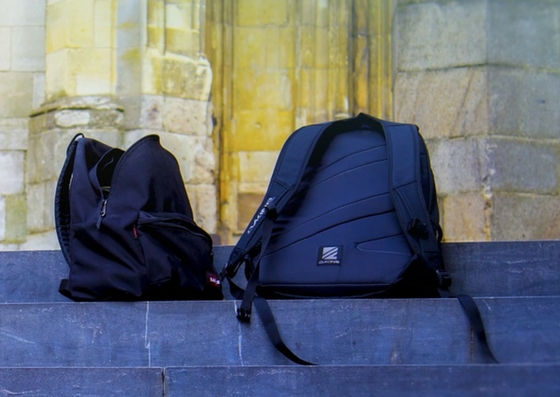by frogmin
Share

HERE IS WHAT YOU NEED TO KNOW TO REDUCE THE POSSIBLE RISK OF SPINAL INJURY
heavy school back packsWatch those heavy bags! If your child is heading off to school carrying a heavy and hefty backpack, loaded with textbooks, the wellbeing and alignment of their spine may be at risk. The daily stress and strain of carrying heavy backpacks may contribute to future postural problems that can last for years to come.
Your chiropractic team at The Back Clinic wrote this article to discuss possible impacts associated with heavy backpacks on the health of your children’s spine. Additionally, we list several tips you can do right now to ‘lessen the load’. Please read on, or feel free to contact The Back Clinic today for a free chiropractic consultation and posture check.
RULE OF THUMB – BACKPACK WEIGHT
Follow this ‘rule of thumb’ regarding the weight of school bags. The maximum weight of a fully packed bag should be equivalent to 10% of the student’s total body weight. i.e. if your child weights 55kg the maximum weight of their packed bag should be 5.5kg – no heavier! This figure comes from the Chiropractors’ Association of Australia.
STUDY – BACKPACK USE AMONG AUSTRALIAN SCHOOL CHILDREN
In an in-field observational study conducted by the Chiropractors’ Association of Australia1, it was revealed that:
“90 per cent of school children have bad posture when carrying their bags and could experience spinal damage as a result, while 75 per cent are not using their backpack’s ergonomic features which could prevent such damage”
We find these figures really alarming – do you?
Additionally, it was observed that students carried their bags the wrong way, and their bags weighed too much:
“On average, parent’s estimate junior school children are carrying the equivalent of 17 per cent of their body weight in their school bags which is almost double the maximum recommended weight”
Remember, the suggested weight limit is up to 10% of the student’s total body weight, not more.
SHOULD I BE WORRIED ABOUT THE WEIGHT OF MY CHILD’S SCHOOL BACKPACK?
A recent Australian study2 (“Perceived school bag load, duration of carriage, and method of transport to school are associated with spinal pain in adolescents: an observational study”) concluded that “neck pain is as common as back pain amongst adolescents. Perceived school bag load, duration of carriage and method of transport to school are associated with back and neck pain.”
The weight of your child’s school backpack should definitely be a consideration you give thought to. There are both immediate and longer-term health impacts associated with heavy lifting and repetitive load bearing activities. Some of these impacts may include:
- picking up a heavy backpack which places immediate strain on the spine
- carrying weighty and overloaded backpacks may contribute to postural shifts
- carrying a backpack with only one shoulder strap may cause ‘drop shoulder’
- repetitive strain and heavy loads may contribute to back pain and muscle tension
- later in life, postural issues may contribute to back pain, headaches, poor biomechanics and other musculoskeletal aches and pains.
CONSIDER THESE RECOMMENDATIONS FROM THE CHIROPRACTORS’ ASSOCIATION OF AUSTRALIA
- a maximum bag weight equivalent to 10% of the student’s body weight
- selecting the right sized bag. Aim for a bag that is no wider than the student’s chest.
- Choose a bag based on comfort over colour, fashion and trends
- Look for waist straps and padded shoulder straps
- When packing the backpack, place heaviest items on the bottom and closest to the spine.
TAKE CARE WITH HEAVY BACKPACKS
Remember, many spinal problems are preventable.
At The Back Clinic we help many students and families address postural problems. Chiropractic care, and a program of chiropractic adjustments, commonly help musculoskeletal issues such as back pain, neck pain, headaches and sports injury.
BOOK A CHIROPRACTIC CONSULTATION
Are you interested in learning how chiropractic may help you to reduce pain, improve posture and perform better? Let’s work together to improve your health.